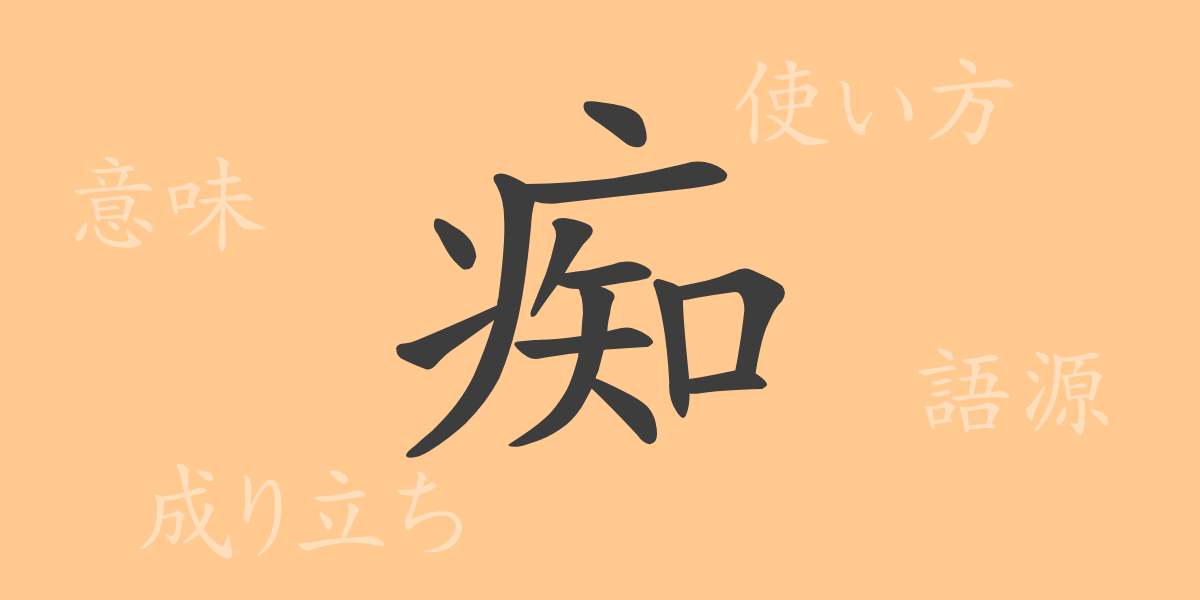Every written character in Japanese carries its own history and story. The kanji “痴(ち)” is no exception. The unique sound and meaning of this character reveal the richness of the Japanese language. In this article, we will delve into the origins, meanings, usages, and even the idioms and proverbs associated with the kanji “痴(ち),” unraveling its charm.
Origins of “痴(ち)”
The kanji “痴(ち)” is composed of the radical “疒(やまいだれ),” which signifies illness or disease, and “知(ち),” which means knowledge or recognition. Combining these elements, “痴(ち)” originally referred to mental disorders or foolishness arising from disordered knowledge. This combination suggests a state where knowledge is impaired, leading to foolishness or mental disturbance.
Meanings and Usages of “痴(ち)”
The kanji “痴(ち)” is generally used to mean “foolish” or “silly.” It can also describe the blindness of love, indicating a state where one is led by emotions rather than reason. Thus, it often denotes a lack of intelligence or judgment. However, “痴(ち)” can also carry an endearing connotation, highlighting a lovable foolishness.
Readings, Stroke Count, and Radical of “痴(ち)”
Here are some basic details about the kanji “痴(ち)”:
- Readings: On’yomi (音読み) “チ(ち)”
- Stroke count: 13 strokes
- Radical: “疒(やまいだれ)”
Idioms, Proverbs, and Expressions Using “痴(ち)”
The kanji “痴(ち)” appears in various idioms and expressions, showcasing its wide range of meanings:
- 痴話喧嘩(ちわげんか): A lovers’ quarrel.
- 痴漢(ちかん): A person who engages in inappropriate behavior in public.
- 痴呆(ちほう): A medical term referring to dementia symptoms.
These expressions are commonly used in daily life, highlighting the breadth of meanings associated with “痴(ち).”
Summary of “痴(ち)”
The kanji “痴(ち)” has retained a variety of meanings and usages from its origins to the present day. It is used to describe disruptions in intelligence or emotions and can express endearing foolishness. Understanding the multifaceted nature of this kanji provides a fascinating insight into the depth of the Japanese language. By exploring the diverse faces of “痴(ち),” we gain a deeper appreciation for the richness of Japanese expression.

























